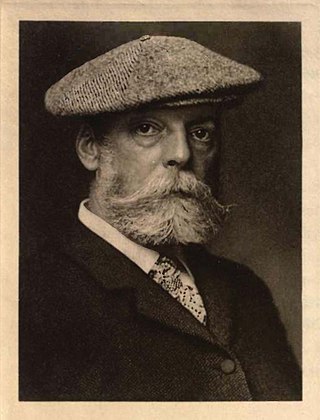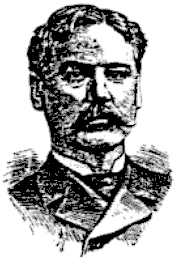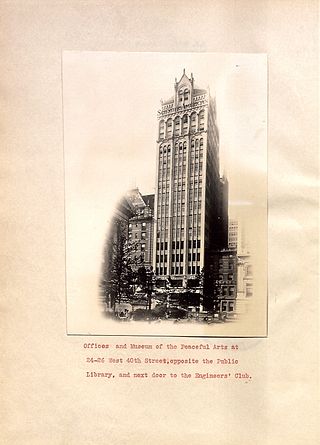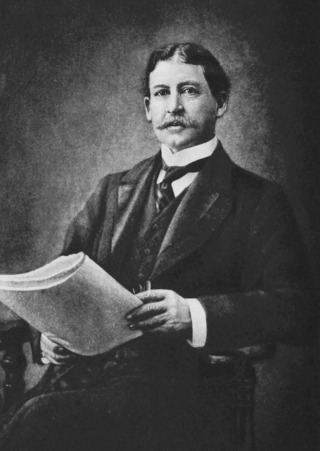You Can't Take It with You is a comedic play in three acts by George S. Kaufman and Moss Hart. The original production of the play premiered at the Chestnut Street Opera House in Philadelphia on November 30, 1936. The production transferred to Broadway's Booth Theatre on December 14, 1936 where it played for 838 performances.

Jules Bastien-Lepage was a French painter closely associated with the beginning of naturalism, an artistic style that grew out of the Realist movement and paved the way for the development of impressionism. Émile Zola described Bastien-Lapage's work as "impressionism corrected, sweetened and adapted to the taste of the crowd."

Whitelaw Reid was an American politician, diplomat and newspaper editor, as well as the author of Ohio in the War, a popular work of history.

Ariadne auf Naxos, Op. 60, is a 1912 opera by Richard Strauss with a German libretto by Hugo von Hofmannsthal. The opera's unusual combination of elements of low commedia dell'arte with those of high opera seria points up one of the work's principal themes: the competition between high and low art for the public's attention.

Walter Charles Hagen was an American professional golfer and a major figure in golf in the first half of the 20th century. His tally of 11 professional majors is third behind Jack Nicklaus (18) and Tiger Woods (15). Known as the "father of professional golf," he brought publicity, prestige, big prize money, and lucrative endorsements to the sport. Hagen is rated one of the greatest golfers ever.
The Rochester Numismatic Association (RNA) is a not-for-profit organization with an educational mission. The RNA was organized in 1912 by a group of local collectors to attract the American Numismatic Association's annual convention to Rochester, New York, USA. They met with success as the ANA did hold their convention in Rochester. The RNA has met continuously since 1912. Only one local coin club, the Boston Numismatic Society, founded in 1860, has a longer record of continuous meetings.

The American Numismatic Society (ANS) is a New York City-based organization dedicated to the study of coins, money, medals, tokens, and related objects. Founded in 1858, it is the only American museum devoted exclusively to their preservation and study. Its collection encompasses nearly one million items, including medals and paper money, as well as the world's most comprehensive library of numismatic literature. The current President of the Society, Dr. Ute Wartenberg, served as the Executive Director for two decades and was succeeded in this role by Dr. Gilles Bransbourg.

George Frederick Kunz was an American mineralogist and mineral collector.

Albert Bigelow Paine was an American author and biographer best known for his work with Mark Twain. Paine was a member of the Pulitzer Prize Committee and wrote in several genres, including fiction, humor, and verse.

The Fordham Rams are the varsity sports teams for Fordham University. Their colors are maroon and white. The Fordham Rams are members of NCAA Division I and compete in the Atlantic 10 Conference for most sports. In football, the Rams play in the Patriot League of NCAA Division 1 Football Championship Subdivision. The University also supports a number of club sports, and a significant intramural sports program. The University's athletic booster clubs include the Sixth Man Club for basketball and the Afterguard for sailing.

Alexander Wilson Drake (1843–1916) was an American artist, collector and critic.

The Final Deduction is a Nero Wolfe detective novel by Rex Stout, published by the Viking Press in 1961 and collected in the omnibus volume Three Aces.

Charles Augustus de Kay was a linguist, poet, critic, and fencer. He was a son of George Coleman De Kay, a naval officer.

The Museum of the Peaceful Arts was a museum in Manhattan, New York City. Established at 24 West 40th St. around 1920, it was later relocated to the Daily News Building at 220 E. 42nd St. It was later closed, and superseded by the New York Museum of Science and Industry.

Heber Reginald Bishop was an American businessman and philanthropist of the late 19th and early 20th centuries. His collections of art, especially his noted collection of jade, were donated to museums. Bishop was a Trustee of the Metropolitan Museum in New York City during its early years.
The Baháʼí Faith in Greater Boston, a combined statistical area, has had glimpses of the religion in the 19th century arising to its first community of religionists at the turn of the century. Early newspaper accounts of events were followed by papers on the precursor Bábí religion by Dr. Rev. Austin H. Wright were noted, materials donated, and lost, and then other scholars began to write about the religion. The community began to coalesce being near to Green Acre, founded by Sarah Farmer, who publicly espoused the religion from 1901. From then on, the institution would progressively be associated with Baháʼís - a place where both locals and people from afar came to learn of the religion, and who officially took over controlling interest from 1913. Leaders rising to national prominence with a national level of organization soon arose after ʻAbdu'l-Bahá, then head of the religion, traveled through the area for about 40 days and across the United States for some 239 days. Most prominent were Harlan Ober, William Henry Randall, and Alfred E. Lunt, who served in events in the Boston area, Green Acre boards, and national institutions of the religion. In addition to national leaders in the religion, a number of notable individuals joined the religion and were increasingly visible - such as Urbain Ledoux, Sadie and Marby Oglesby, James Ferdinand Morton Jr., Nancy Bowditch, and Guy Murchie. The community moved from beginning to host public meetings to systematically support a presence in a Center in Boston with services and presentations on the religion as well as a racially integrated community since 1935. Starting about the 1950s and broadening into the 1960s, there was wider recognition of the Baháʼís themselves. Sometimes this took the form of noting their persecution in Morocco and then Iran and other times noting local concerts and fairs with their participation. The modern community, albeit a tiny fraction of the wider population, is present in some concentrations and thin areas throughout the greater Boston area. Over the last couple of decades, it has been systematically pursuing programs of neighborhood community-building activities of study circles, children's classes, junior youth groups, and devotional meetings among the activities and observances of the religion.
The Musicians Club of New York is a musicians' club based in New York City. It was founded in 1911 with the intent of providing a social platform for musicians in and around New York, but its mission later expanded to support and promote young musicians through prizes and scholarships, as well as provide recognition for contemporary composers. From 1979 it administered the Koussevitzky International Recording Award (KIRA), and since 1956 has presented the Young Artist Awards, now known as the Serge and Olga Koussevitzky Young Artist Awards.

Joan of Arc is a 1915 bronze equestrian statue on a granite base, sculpted by Anna Hyatt Huntington. The statue is located in Manhattan, New York City, on Riverside Drive and 93rd Street. It depicts the Roman Catholic saint and French folk heroine Joan of Arc.

Maria Millington Lathbury, Lady Evans (1856–1944) was a classical scholar, archaeologist and numismatist. An alumna of Somerville College, she campaigned for Oxford University to award degrees to women. Along with Ethel Abrahams, she was one of the first female scholars of classical Greek dress. She married the archaeologist John Evans, and their daughter was art historian Joan Evans.

Benjamin Maximillian Mehl, usually known as B. Max Mehl, was an American dealer in coins, selling them for over half a century. The most prominent dealer in the United States, through much of the first half of the 20th century, he is credited with helping to expand the appeal of coin collecting from a hobby for the wealthy to one enjoyed by many.















